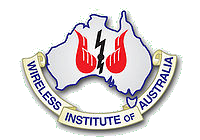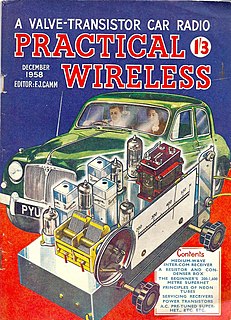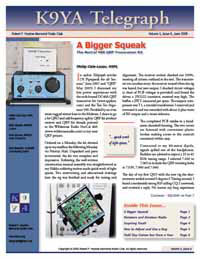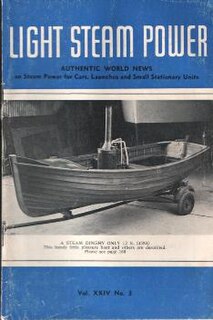Content and coverage
As the house journal of the Radio Society of Great Britain, RadCom covers all matters directly related to the society. The remaining pages are devoted to a number of regular columns covering topics such as low frequency, amateur television, VHF/UHF, electromagnetic compatibility, radio propagation, contesting, and many other subjects. There are two or three in-depth technical articles per month, plus reviews of new equipment and other features which relate to amateur radio as a whole.
Most of the technical content is provided by RSGB members and invited authors. The society actively solicits technical articles for publication, which are then subject to independent scrutiny by the RSGB Technical Committee. On approval, articles are passed to the Editorial Department for editing prior to insertion into the magazine.
Communications in Gibraltar comprise a wide range of telephony systems, Internet access, broadcasting and satellite control. There is also printed and online media. Regulation of telecommunications and broadcasting are the responsibility of the Gibraltar Regulatory Authority (GRA), established by means of the Gibraltar Regulatory Authority Act in 2000.

Hugo Gernsback was a Luxembourgish-American inventor, writer, editor, and magazine publisher, best known for publications including the first science fiction magazine. His contributions to the genre as publisher—although not as a writer—were so significant that, along with the novelists H. G. Wells and Jules Verne, he is sometimes called "The Father of Science Fiction". In his honour, annual awards presented at the World Science Fiction Convention are named the "Hugos".
MI8, or Military Intelligence, Section 8 was a British Military Intelligence group responsible for signals intelligence and was created in 1914. It originally consisted of four sections: MI8(a), which dealt with wireless policy; MI8(b), based at the General Post Office, dealt with commercial and trade cables; MI8(c) dealt with the distribution of intelligence derived from censorship; and MI8(d), which liaised with the cable companies. During World War I MI8 officers were posted to the cable terminals at Poldhu Point and Mullion in Cornwall and Clifden in County Galway, continued until 1917 when the work was taken over by the Admiralty. In WW2, MI8 was responsible for the extensive War Office Y Group and briefly, for the Radio Security Service.
The American Philatelist, published by the American Philatelic Society, is one of the world's oldest philatelic magazines still in operation; its first issue having appeared in January 1887.

The Wireless Institute of Australia (WIA) was formed in 1910, and is the first and oldest national amateur radio society in the world. It represents the amateur radio operators of Australia as the AR "peak body" in dealings with the Australian Communications and Media Authority (ACMA), the authority under the government of Australia that administers communications within and external to Australia. The WIA publishes a bi-monthly journal for its membership called Amateur Radio. The organisation is the national society representing Australia in the International Amateur Radio Union.

Field Day is an annual amateur radio exercise, widely sponsored by IARU regions and member organizations, encouraging emergency communications preparedness among amateur radio operators. In the United States, it is typically the largest single emergency preparedness exercise in the country, with over 30,000 operators participating each year. Field Day is always the fourth full weekend of June, beginning at 18:00 UTC Saturday and running through 20:59 UTC Sunday.

The Radio Society of Great Britain (RSGB) is the United Kingdom's recognised national society for amateur radio operators. The society was founded in 1913 as the London Wireless Club making it one of the oldest organisations of its kind in the world. Through its work, it represent the interests of the UK's 80,000 licensed radio amateurs in the United Kingdom and certain dependent territories of the United Kingdom at the International Amateur Radio Union, acting as a medium for communication between the licensed operators and the UK government. Prince Philip, Duke of Edinburgh is current patron of the society.
American Cinematographer is a magazine published monthly by the American Society of Cinematographers. It focuses on the art and craft of cinematography, covering domestic and foreign feature productions, television productions, short films, music videos and commercials. The emphasis is on interviews with cinematographers, but directors and other filmmakers are often featured as well. Articles include technical how-to pieces, discussions of tools and technologies that affect cinematography, and historical features.

Practical Wireless is a British amateur radio magazine, published monthly by Warners Group Publications.

The Plantsman, published quarterly by the Royal Horticultural Society, was a 68-page magazine "dedicated to a deeper understanding and appreciation of garden plants". Its authoritative articles were written by acknowledged experts on plant-related subjects, including plant profiles, horticulture, botany and the development of garden plants, focusing on ornamental plants grown in temperate gardens. It also reflected the scientific work of the RHS, as well as research conducted by other horticultural and botanical institutions and individuals.
The New Zealand Association of Radio Transmitters (NZART) is a non-profit organisation of amateur radio enthusiasts in New Zealand. It represents New Zealand amateur radio operators nationally and internationally. NZART is a founding member of the International Amateur Radio Union. It is an association of individual members, however those members are encouraged to form local branches.

The British Amateur Television Club (BATC) is the world's largest television technology club; it has members in the UK and all around the world and is a non-profit making club run by an elected committee of volunteers for the benefit of its members. Membership is open to all who are interested in television, amateur or professional, indeed the club has many members who work for major broadcasting companies.

The K9YA Telegraph is a free, monthly, general interest amateur radio e-Zine first published in January 2004. The journal of the Robert F. Heytow Memorial Radio Club, the K9YA Telegraph is distributed to subscribers in over 100 countries via e-mail as a PDF file. Issues comprise original articles written by authors drawn from its subscriber base. Notable among those authors was contributing editor, Rod Newkirk (SK), W9BRD/VA3ZBB, former "How's DX" columnist for QST magazine.
Electronics Australia or EA was Australia's longest-running general electronics magazine. It was based in Chippendale, New South Wales.

Archie Frederick Collins, who generally went by A. Frederick Collins, was a prominent early American experimenter in wireless telephony and prolific author of books and articles covering a wide range of scientific and technical subjects. His reputation was tarnished in 1913 when he was convicted of mail fraud related to stock promotion. However, after serving a year in prison, he returned to writing, including, beginning in 1922, The Radio Amateur's Handbook, which continued to be updated and published until the mid-1980s.

Electrician and Mechanic was an American science and technology magazine published from 1890 to January 1914 when it merged with Modern Electrics to become Modern Electrics & Mechanics. In July 1914, incorporated with Popular Electricity and the World's Advance and the title became Popular Electricity and Modern Mechanics. The new publisher, Modern Publishing, began a series of magazine mergers and title changes so numerous that librarians began to complain. In October 1915 the title became Popular Science Monthly and the magazine is still published under that name today.
Electronics World is a technical magazine in electronics and RF engineering aimed at professional design engineers. It is produced monthly in print and digital formats.

IEEE Microwave Magazine is a professional magazine for the members of IEEE Microwave Theory and Techniques Society that is published monthly with several special conference issues. It is also available to others as a part of the IEEE Xplore. In addition to providing societal communications to the MTT-S membership, it has regular columns giving insight into a range of technical and non-technical interests and the publication of technical feature-length articles that provide overviews and tutorials on the state-of-the-art in a given area. Currently, a typical print run is approximately 15,000 issues.

Light Steam Power was a magazine dedicated to amateur and small-scale interest in steam power. Its masthead for some years described itself as, "Authentic World News on Steam Power for Cars, Launches and Small Stationary Units".
Call signs in United Kingdom include a three letter country code, and a series of letters and numbers.












